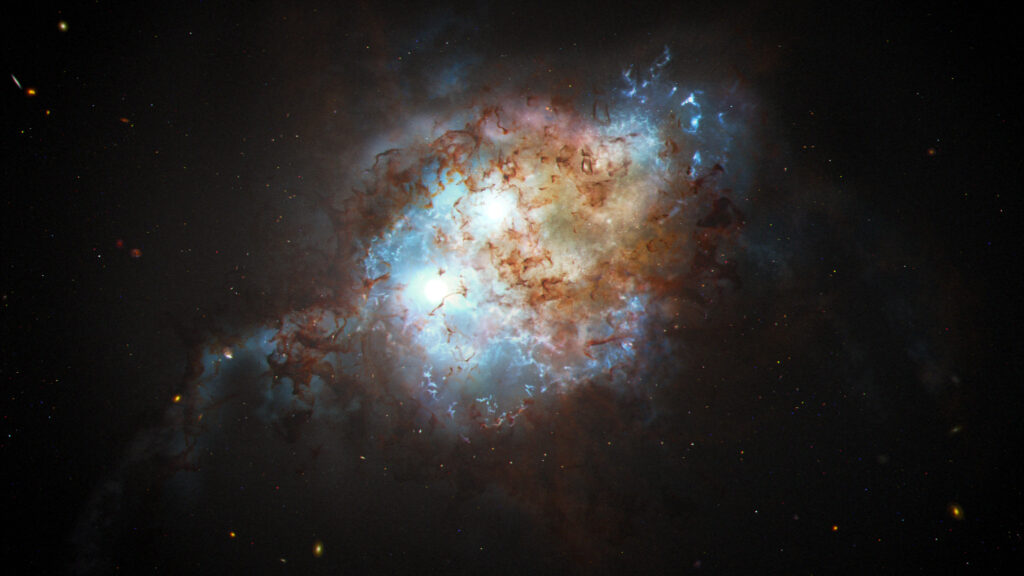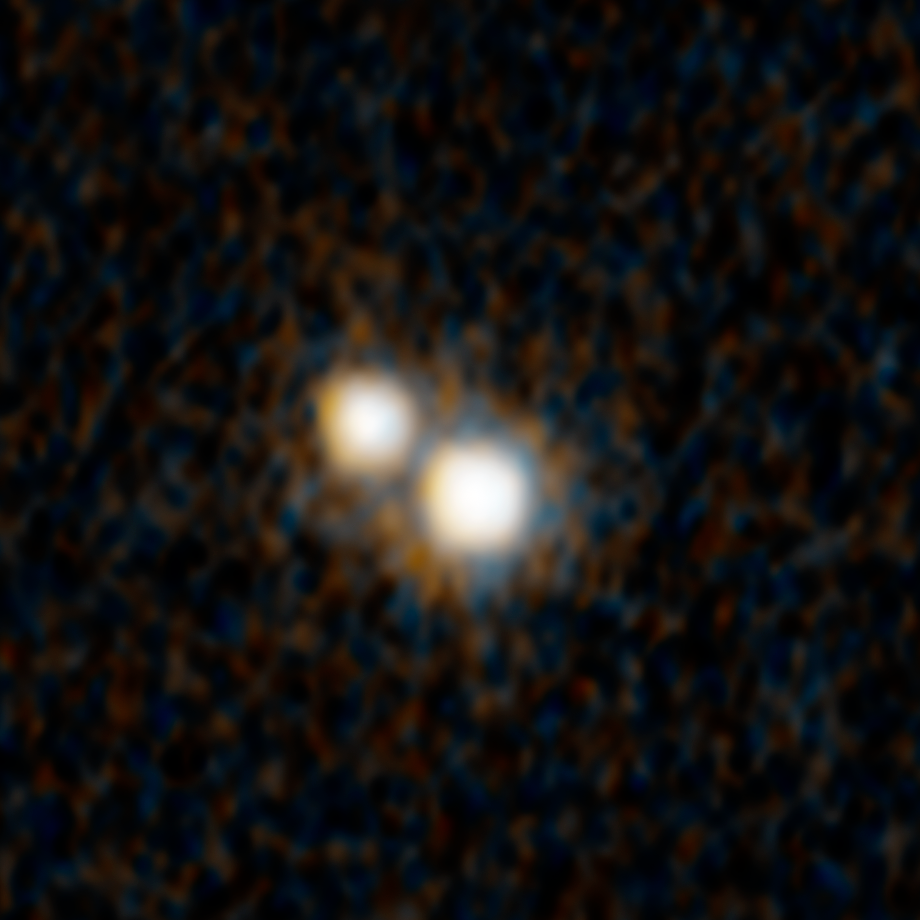During the analysis of data collected by the Hubble telescope, a team of astronomers discovered an unexpected and rare object: a pair of gravitationally bound quasars located inside merging galaxies. They existed when the age of the Universe was only 3 billion years.
What are quasars?
Quasars are often called beacons of the Universe. They emit several times more energy than galaxies like our Milky Way. The sources of all this activity are supermassive black holes, more precisely, the accretion disks surrounding them. Under the influence of gravity and friction, their constituent substance heats up to very high temperatures, which is accompanied by the release of a huge amount of energy.
Finding a double quasar
Thanks to the commissioning of a number of new, more powerful telescopes, astronomers got opportunities that they did not have even 10 – 15 years ago. This allowed them to move on to the next stage of studying these space beacons. They started searching for binary quasars located in merging galaxies.

It turned out to be a very difficult task. Hubble, Chandra, Gaia space telescopes and a network of ground-based observatories were involved in the observations. But in the end, the researchers were successful. They managed to identify a double quasar, which received the designation SDSS J0749 + 2255. It existed in an era when the age of the Universe was only 3 billion years old.
Subsequent checks confirm that we are really talking about two objects, and not about the case of gravitational lensing of one quasar by some closer galaxy. The components of SDSS J0749 + 2255 black holes were separated by a distance of 12 thousand light years. Their masses exceeded the mass of our Sun by a billion times.

According to the researchers’ calculations, over the next few hundred million years, the galaxies and their constituent black holes have merged into a single object that resembles the giant elliptical galaxy M87 located nearby. At its center is a gigantic black hole, which exceeds the solar mass by 6.5 billion times. Most likely, it was formed during at least several galactic mergers.
According to https://www.nasa.gov
Follow us on Twitter to get the most interesting space news in time
https://twitter.com/ust_magazine

